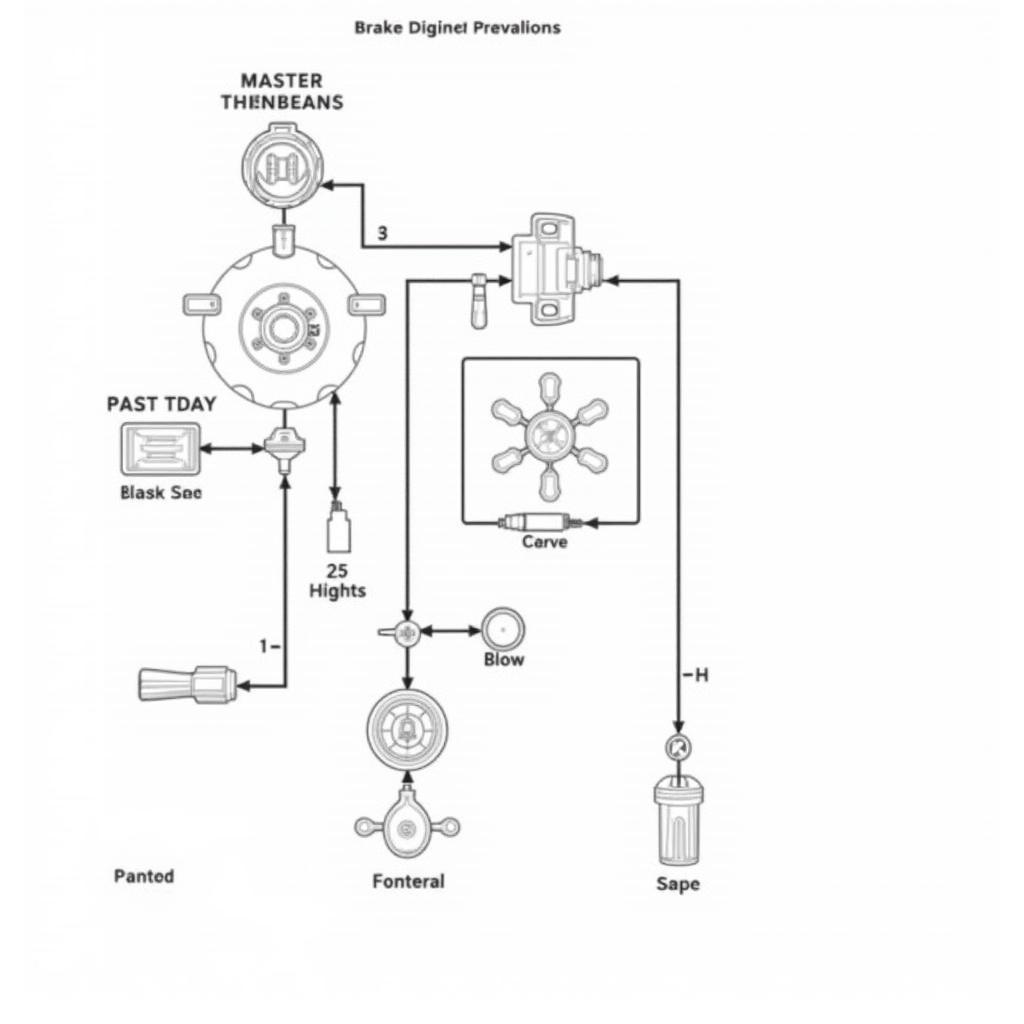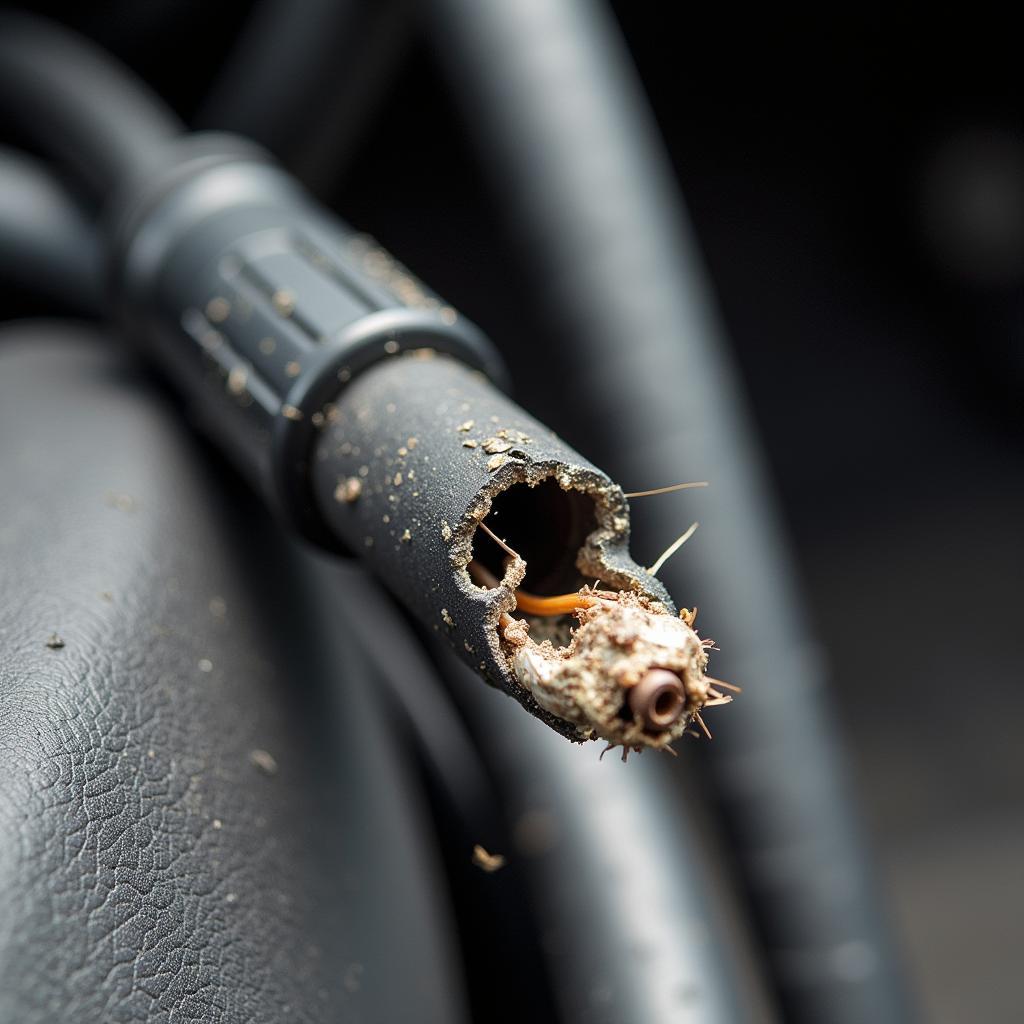A Honda brake system problem can sometimes be linked to your car not starting. This perplexing issue can leave you stranded and frustrated. We’ll explore the connection between brake issues and starting problems in Hondas, offering troubleshooting tips and solutions to get you back on the road.
Understanding the Link Between Brakes and Starting
While seemingly unrelated, your Honda’s braking system and starting system can be interconnected. One common culprit is the brake shift interlock. This safety feature prevents you from shifting out of park unless the brake pedal is depressed. A faulty brake light switch, often associated with brake issues, can also prevent the car from starting. Let’s delve into the specifics.
 Honda Brake System Diagram
Honda Brake System Diagram
Sometimes, a low brake fluid level can trigger a warning light that also affects the starting system, particularly in newer models. Although less common, a severely worn brake booster can create a vacuum leak, impacting engine performance and potentially hindering starting.
Troubleshooting Honda Brake System and Starting Problems
If your Honda won’t start and you suspect a brake system issue, start with the basics. Check your brake lights. If they’re not working, the brake light switch is likely the issue. This switch not only controls your brake lights but also signals to the car’s computer that the brake pedal is depressed, allowing the engine to start. Replacing this switch is often a simple and inexpensive fix.
Next, check your brake fluid level. Low brake fluid can trigger warning lights and potentially interfere with the starting system in some models. If the fluid is low, top it off and inspect for leaks. A leaking brake line can not only cause starting issues but also pose a serious safety risk.
Why Won’t My Honda Start After Brake Work?
Sometimes, a Honda won’t start after brake work. This could be due to a disconnected or damaged wire during the repair process, especially around the brake light switch or ABS sensor. Double-check all connections and wiring to ensure everything is properly secured. Potential problems for cars can arise from even the smallest oversight.
Another possibility is a faulty new part. While rare, a defective brake light switch or other newly installed component can cause starting problems. Test the new part to ensure it’s functioning correctly.
Honda Brake System Problem Car Won’t Start: The Role of the Shift Interlock
The brake shift interlock prevents shifting out of park without depressing the brake pedal. If this system malfunctions, it can also prevent the car from starting. Try jiggling the shifter while simultaneously depressing the brake pedal firmly. This might overcome a temporary sticking issue. However, if the problem persists, the shift interlock solenoid or related components may need replacement. You might find some similarities with the 2005 smart car problems.
“A common mistake people make is overlooking the simple things,” says John Davis, a certified automotive technician with 20 years of experience. “Often, a simple fix like replacing a brake light switch can solve the ‘Honda brake system problem car won’t start’ issue. Don’t jump to conclusions without checking the basics first.”
What Problems Come From Driving a Car With a Faulty Brake System?
Driving with a faulty brake system is incredibly dangerous and should be avoided at all costs. It can lead to brake failure, increasing the risk of accidents. What problems come from driving a car with misfiring cylinders? While different from brake issues, it’s also a serious concern that needs attention.
what problems come from driving a car with misfiring cylinders
“Remember, a well-maintained car is a safe car,” adds Maria Sanchez, another experienced automotive technician. “Regular brake inspections and prompt repairs are crucial for optimal performance and safety.” Sometimes, life throws curveballs. You might wonder, can you use sick time for car problems?
can you use sick time for car problems
Conclusion
A “honda brake system problem car won’t start” scenario can be frustrating, but systematic troubleshooting can often pinpoint the culprit. Start with the basics – check your brake lights, brake fluid level, and shift interlock. If the problem persists, consult a qualified mechanic. Don’t hesitate to connect with AutoTipPro at +1 (641) 206-8880 or visit our office at 500 N St Mary’s St, San Antonio, TX 78205, United States, for expert assistance. We’re here to help you get back on the road safely.







Leave a Reply